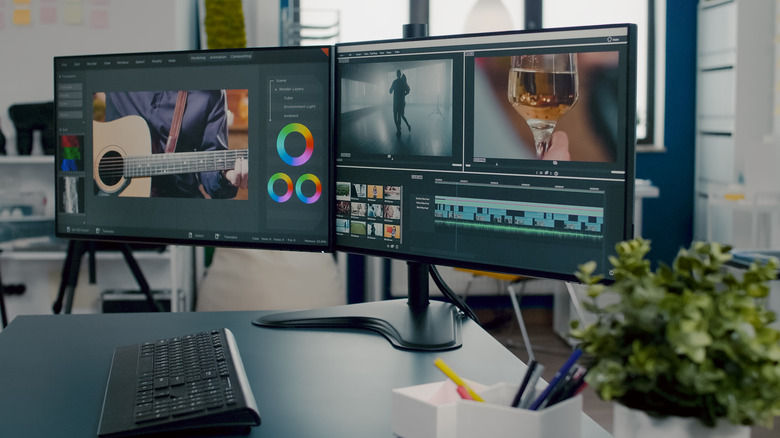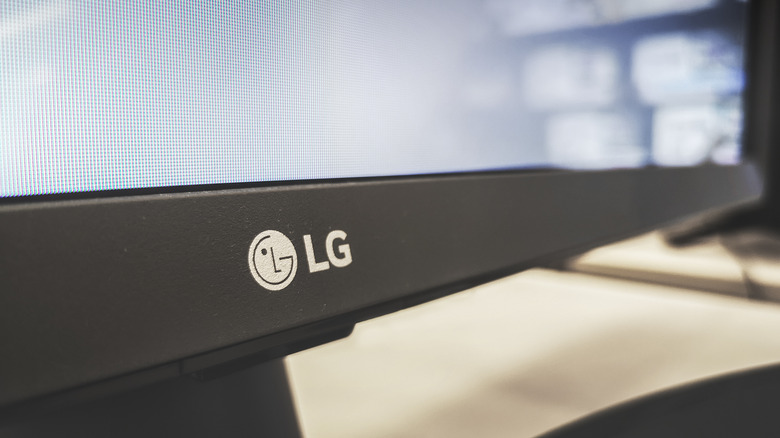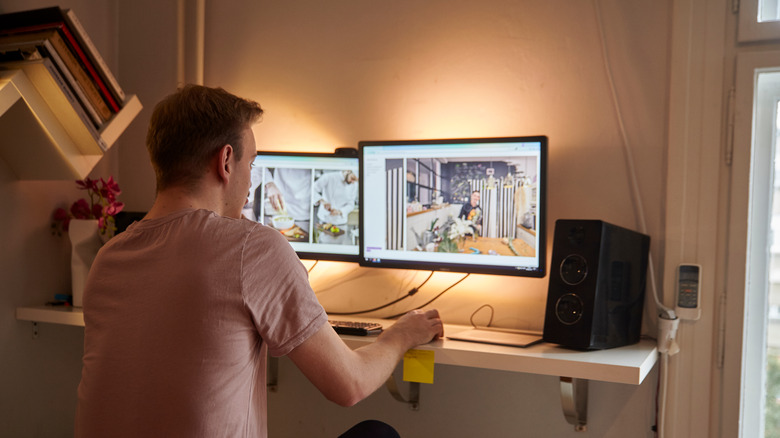How To Set Up Dual Monitors On Mac
Dual monitors are becoming increasingly popular among professionals and individuals who want to increase their productivity and improve their workflow. Whether you want the ability to multitask more efficiently or enhance your virtual presentation skills, there are many reasons you should consider purchasing an additional monitor. If you've never tried setting up dual monitors on a Mac, it may seem complicated, but it's relatively simple and can be done with just a few steps, according to Apple.
Before getting started, ensure your Mac has a built-in Thunderbolt port or a Mini DisplayPort. Connecting an external monitor to your Mac requires one of these ports, so if you don't have one, you'll need to consider purchasing the appropriate adapter. Next, you will need hardware such as, of course, a second monitor, as well as a suitable cable and the necessary adapters. If you're planning to purchase something other than one of Apple's monitors, you'll also need to ensure that your second monitor is compatible with your Mac.
How to know if dual monitors are right for you
First, dual monitors allow multiple applications to be open and visible simultaneously. This feature can be handy for tasks that require you to switch between various applications, such as research and writing, programming, or graphic design. Having two monitors allows you to have a document open on one monitor while you have your research or email on the other. This method can save time and improve your workflow by constantly reducing the need to switch between applications.
Dual monitors can also be helpful for virtual presentations. With an additional monitor, you can have your presentation open on one monitor while you have your notes on the other. Keeping these two aspects separate will allow you to organize your presentation and easily refer to your speaker notes without switching between multiple applications.
You might also consider dual monitors for gaming and streaming content. With a second monitor, you can open your game or content on one monitor while your stream chat is available on the other. This built-in division can help you easily interact with your audience without switching applications while gaming.
Finally, dual monitors can also be helpful for video and photo editing. With a second monitor, you can open your video or photo on one monitor while your editing tools are on the other. This method allows you to easily make changes to your video without having to switch between multiple applications.
How to pick a dual monitor to set up with your Mac
Choosing the best dual monitors for your Mac can be more complicated than selecting a single monitor, as you'll need to consider things like compatibility, size, and connectivity.
Make sure that the dual monitors you choose are compatible with your Mac. Most modern Macs have Thunderbolt or USB-C ports, so you'll want to look for monitors that can connect to your Mac using one of these ports. Some monitors also come with HDMI or DisplayPort, which can be helpful if you plan to connect other devices, like a gaming console or a streaming device.
The size of the monitors you should use ultimately depends on your preference and the type of work you do. If you're looking for monitors to use primarily for productivity and gaming, a 27-inch display is a good choice. If you're looking for monitors to use primarily for video or photo editing, a larger display — like 32 inches or more — might be more suitable, depending on your needs.
When using dual monitors, one last thing to consider is how you want to position them. The most common setup is to place the two monitors side by side, but you can also choose to stack them on top of each other, or position them at different angles. The orientation of your monitors will depend on your preference and the work you'll be doing.
How to set up a dual monitor system for your Mac
After you've determined that your Mac usage warrants a dual monitor setup and you've decided on the two monitors you'd like to use, the last step is to set up the monitors and configure the settings within your Mac, according to Apple.
- Connect your first monitor to your Mac using a Thunderbolt or USB-C cable. If your second monitor has a different connection type, use the appropriate cable to connect it to your Mac.
- Navigate to System Preferences by clicking the Apple icon at the top left corner. Then, choose "Displays."
- In the Display's preferences, you will see a representation of your monitors. Drag and drop the icons to arrange them exactly how your monitors are physically arranged.
- Select the resolution that you want for each monitor. Then, you can choose which monitor you want to use as your primary display by selecting the "Arrangement" tab.
You can further adjust the settings of your dual monitors by going to the Display tab and selecting the "Gather Windows" button. If you get lost or confused with your new setup, this method will help you get your bearing and move windows quickly between the two monitors.



